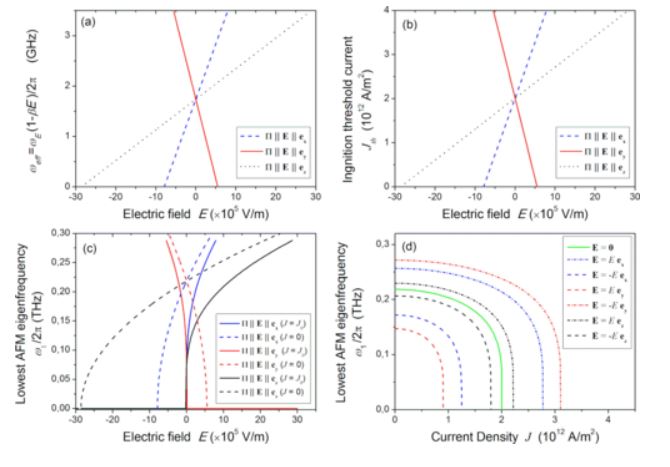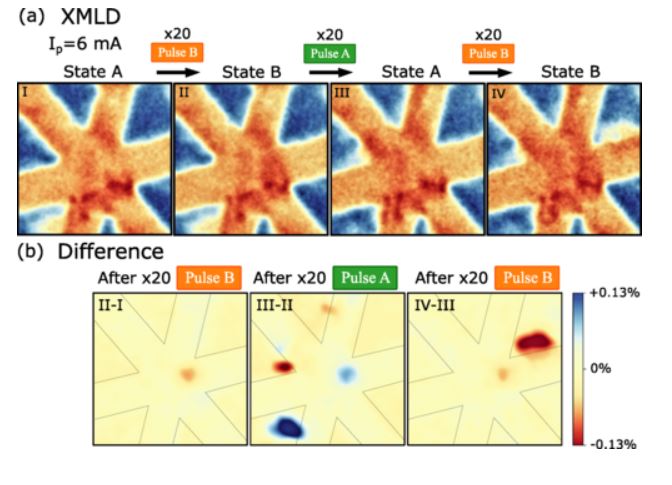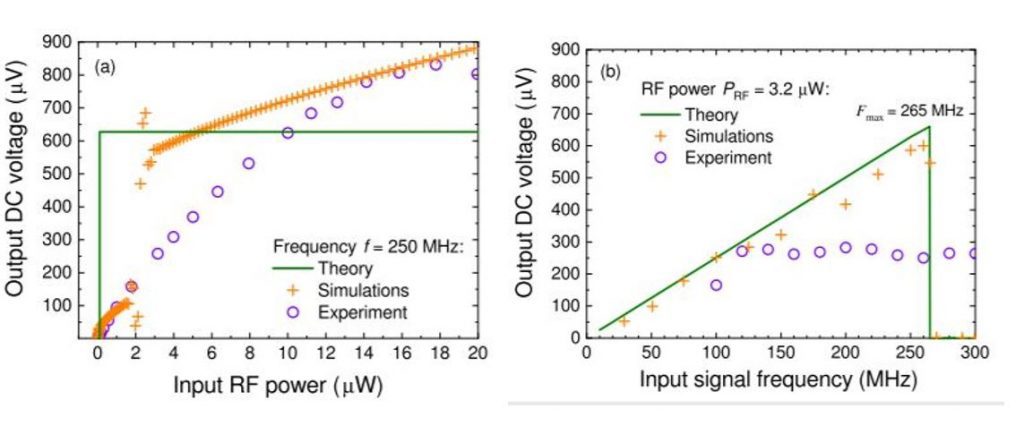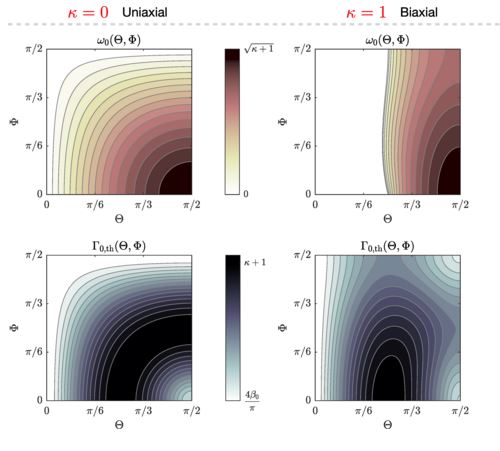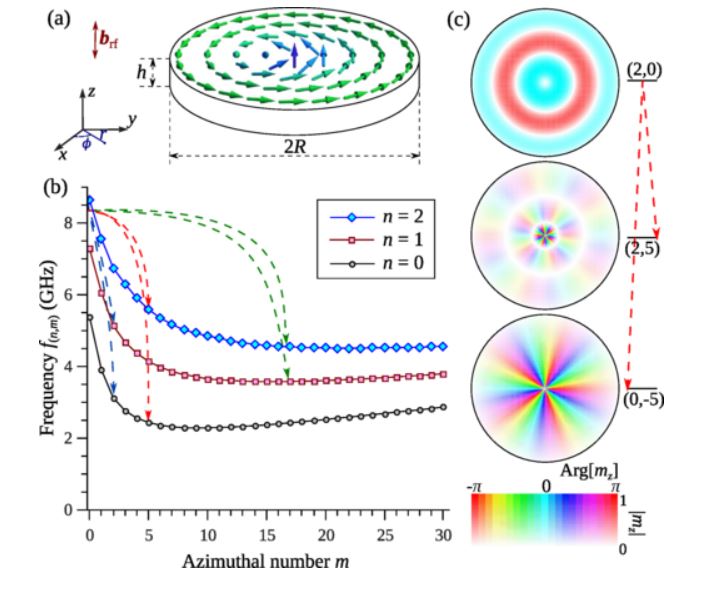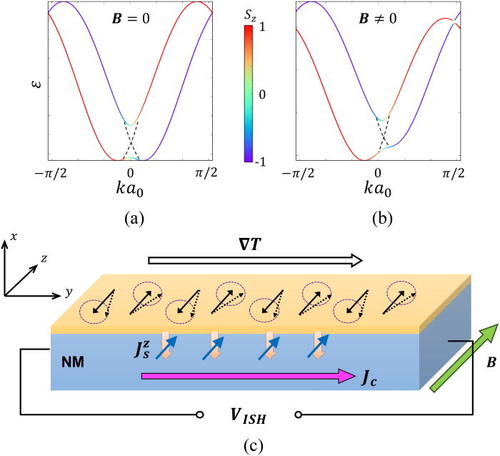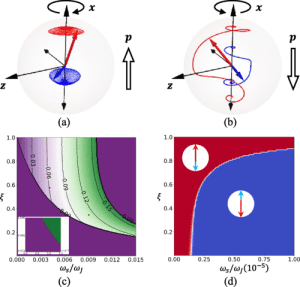 Ferrimagnetic materials (FIMs) can function as high-frequency antiferromagnets while being easy to detect as ferromagnets, offering unique opportunities for ultrafast device applications. While the physical behavior of FIMs near the compensation point has been widely studied, there lacks a generic understanding of FIMs where the ratio of sublattice spins can vary continuously between the ferromagnetic and antiferromagnetic limits. PI-Cheng’s group investigated a series of physical properties of two-sublattice FIMs driven by magnetic fields and current-induced torques. By varying the ratio of sublattice spins, PI-Cheng’s group clarified how the dynamical chiral modes in a FIM are physically connected to their ferromagnetic and antiferromagnetic counterparts, based on which unique features not visible near the compensation point are demonstrated. It is found that current-induced torques can trigger spontaneous oscillation of the terahertz exchange mode (i.e. mimicking a THz antiferromagnet). Compared with its realization in antiferromagnets, a spin-torque oscillator using FIMs not only has a reduced threshold current density but also can be self-stabilized, obviating the need for dynamic feedback.
Ferrimagnetic materials (FIMs) can function as high-frequency antiferromagnets while being easy to detect as ferromagnets, offering unique opportunities for ultrafast device applications. While the physical behavior of FIMs near the compensation point has been widely studied, there lacks a generic understanding of FIMs where the ratio of sublattice spins can vary continuously between the ferromagnetic and antiferromagnetic limits. PI-Cheng’s group investigated a series of physical properties of two-sublattice FIMs driven by magnetic fields and current-induced torques. By varying the ratio of sublattice spins, PI-Cheng’s group clarified how the dynamical chiral modes in a FIM are physically connected to their ferromagnetic and antiferromagnetic counterparts, based on which unique features not visible near the compensation point are demonstrated. It is found that current-induced torques can trigger spontaneous oscillation of the terahertz exchange mode (i.e. mimicking a THz antiferromagnet). Compared with its realization in antiferromagnets, a spin-torque oscillator using FIMs not only has a reduced threshold current density but also can be self-stabilized, obviating the need for dynamic feedback.
This article has been published in Physical Review B and is available here.

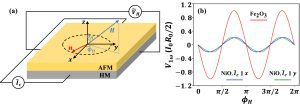 Harmonic analysis is a powerful tool to characterize and quantify current-induced torques acting on magnetic materials, but so far it remains an open question in studying antiferromagnets. Inspired by the collaborative work with PI-Kent and PI-Yang, PI-Cheng’s group formulated a general theory of harmonic Hall responses of collinear antiferromagnets driven by current-induced torques including both field-like and damping-like components. By scanning a magnetic field of variable strength in three orthogonal planes, one is able to distinguish the contributions from field-like torque, damping-like torque, and concomitant thermal effects by analyzing the second harmonic signals in the Hall voltage. The analytical expressions of the first and second harmonics as functions of the magnetic field direction and strength are confirmed by numerical simulations with good agreement. The theory has been utilized directly to explain experimental observations of PI-Kent’s group, and has also been generalized to NiO, providing general guidance to future experiments.
Harmonic analysis is a powerful tool to characterize and quantify current-induced torques acting on magnetic materials, but so far it remains an open question in studying antiferromagnets. Inspired by the collaborative work with PI-Kent and PI-Yang, PI-Cheng’s group formulated a general theory of harmonic Hall responses of collinear antiferromagnets driven by current-induced torques including both field-like and damping-like components. By scanning a magnetic field of variable strength in three orthogonal planes, one is able to distinguish the contributions from field-like torque, damping-like torque, and concomitant thermal effects by analyzing the second harmonic signals in the Hall voltage. The analytical expressions of the first and second harmonics as functions of the magnetic field direction and strength are confirmed by numerical simulations with good agreement. The theory has been utilized directly to explain experimental observations of PI-Kent’s group, and has also been generalized to NiO, providing general guidance to future experiments. Magnon spin Nernst effect (SNE) was recently proposed as a magnonic analog of the spin Hall effect, which takes place in layered collinear antiferromagnets such as MnPS3. The magnon SNE extends many topological properties of electrons to magnonic systems where the bosonic statistics of magnons introduces unexpected physical consequences, opening a versatile platform for antiferromagnetic magnonics. However, existing studies all treated the magnon SNE as an intrinsic bulk effect, where spin diffusion and boundary spin transmission have been ignored. In real exp
Magnon spin Nernst effect (SNE) was recently proposed as a magnonic analog of the spin Hall effect, which takes place in layered collinear antiferromagnets such as MnPS3. The magnon SNE extends many topological properties of electrons to magnonic systems where the bosonic statistics of magnons introduces unexpected physical consequences, opening a versatile platform for antiferromagnetic magnonics. However, existing studies all treated the magnon SNE as an intrinsic bulk effect, where spin diffusion and boundary spin transmission have been ignored. In real exp